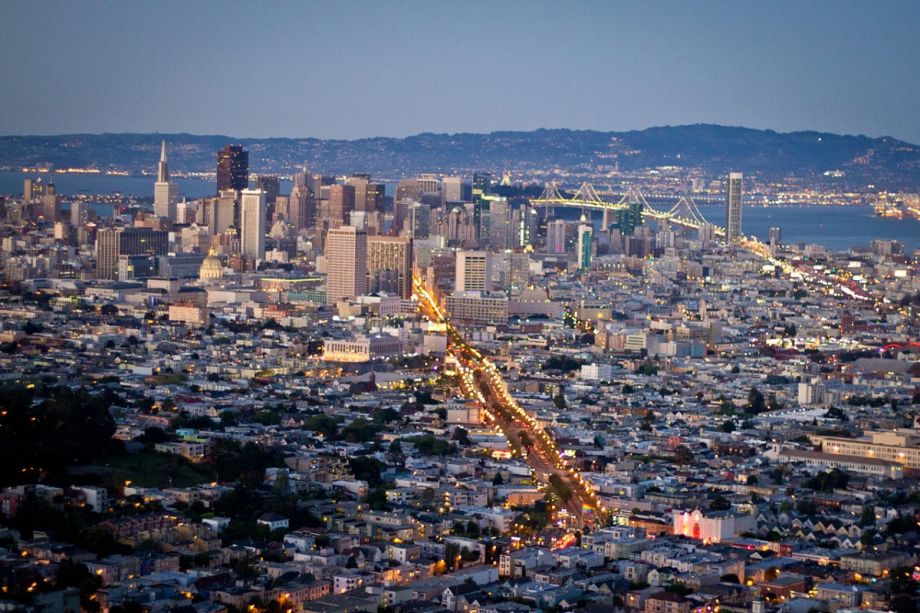Along the southeastern portion of San Francisco, residents enjoy quaint single-family homes with multifamily developments sprinkled in, charming restaurants and old warehouses that serve as remnants of the city’s industrial past. But as new residents flood in and attract more investment, one key area still falls short: public space. A new program may solve that problem.
The neighborhoods known as Dogpatch and Northwest Potrero Hill recently established the country’s first Green Benefit District (GBD). Through the program, property owners will pay a small assessment that will go toward maintaining and improving parks, plazas, gardens, sidewalks and more. It’s modeled after the Community Benefit District (CBD) program, but geared toward greening a residential area, as opposed to promoting commercial shopping districts, like more conventional CBDs.
Locals hope infrastructure improvements can keep pace with the city’s growth. “There’s an influx of new development happening in the Dogpatch,” says Bruce Huie, a neighborhood resident who helped to create the GBD.
Folks like Huie helped create great public spaces throughout the neighborhoods, such as the “urban street parks” near the freeways. But maintaining them has proved to be a challenge. That’s where the GBD comes in. “This provides a way for us to not only maintain them [the public spaces], but provide capital improvements over time.”
Assessment amounts will vary depending on the type of property, but a residential or commercial space will pay $0.0951 per square foot. That comes out to about $5.15 a month for a 650-square foot condo. Landlords cannot pass any of these costs on to their renters, although some commercial tenants may have to share in the assessment increase. In just one year, the GBD will generate over $500,000. About 23 percent of that will be used to build a mobile app that will enable residents to see where, when and by whom their assessment dollars will be spent. Roughly 30 percent will be used for maintenance, another 30 percent for improvements, and the rest for operations and contingency. These allocations were determined through a collective effort among the many GBD stakeholders, including a couple of neighborhood surveys that assessed the costs of specific projects within the GBD boundaries.
Money from the GBD will be deployed more quickly than with many city-run programs and feed directly back into the community. The assessment creates a tangible benefit that improves spaces that everyone in the community can experience and enjoy.
The stake may also give community members more say in municipal-level decisions about the neighborhoods. “It gives the neighborhood better leverage with the city and state on how to move forward with infrastructure improvements in the area,” say Huie.
Creating the GBD took work: three years of outreach and planning, as well as 15 community meetings. Local nonprofit Build Public spearheaded the effort, and worked with residents, city agencies and District 10 Supervisor Malia Cohen to help establish the program, the boundaries and how the assessment should be allocated.
“It’s a real grassroots movement. The neighbors decide what they want, how much they want to pay for it and then they run it,” says Jim Chappel of MJM Management Group, who has 50 years of experience improving public spaces and helped consult on the GBD.
Approving the GBD essentially required a hyperlocal ballot measure. First, at least 30 percent of the property owners, weighted by assessment, needed to sign a petition supporting its formation. Then the Board of Supervisors signed a “Resolution of Intent” so the Department of Elections could send out ballots to the local property owners. The GBD needed a simple majority of votes returned, but passed with an overwhelming 76 percent of the vote.
The next step will be to form a nonprofit to manage the GBD, start the assessment and determine the target projects. Most likely, a management team will be hired to maintain and improve the space.
Other San Francisco supervisors have already expressed interest in replicating the program in their neighborhoods, but the bigger question is whether this can or will work in other cities.
“The hardest part of replicating them is building a community of interest,” says Chappel. And then, of course, there’s getting the financial commitment.
Build Public Executive Director Brooke Ray Smith acknowledges they may take a slightly different approach in the future. “Next time we will recommend starting with a smaller district size.” Between the community outreach and printing and sending out ballot measures, a “nearly herculean effort” was required from all of the stakeholders to make the GBD possible.
But Smith doesn’t hide her enthusiasm when asked if this model could be replicated elsewhere. “Absolutely,” she exclaims. “The GBD can and should be replicated anywhere where neighbors want to take charge of the cleaning and greening of their own neighborhoods.”
The Works is made possible with the support of the Surdna Foundation.

















